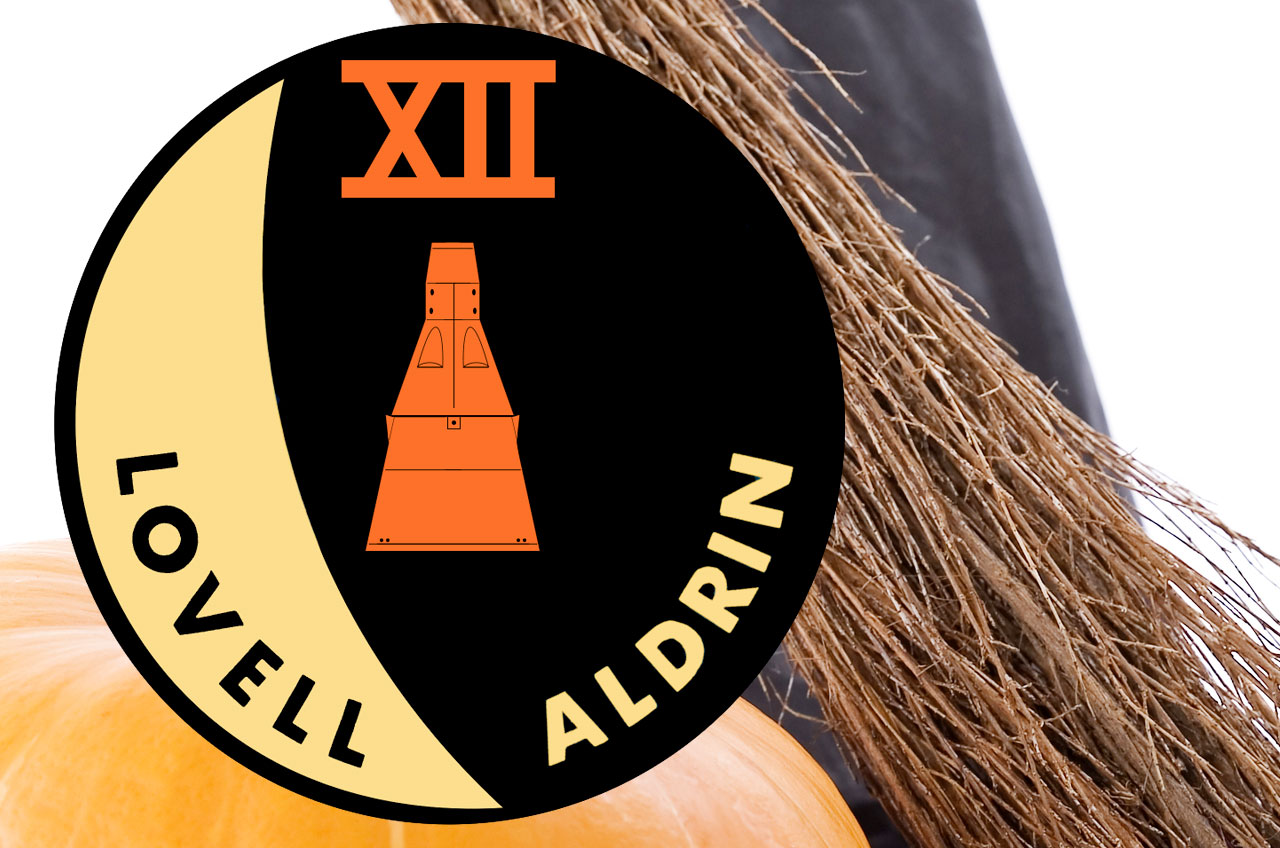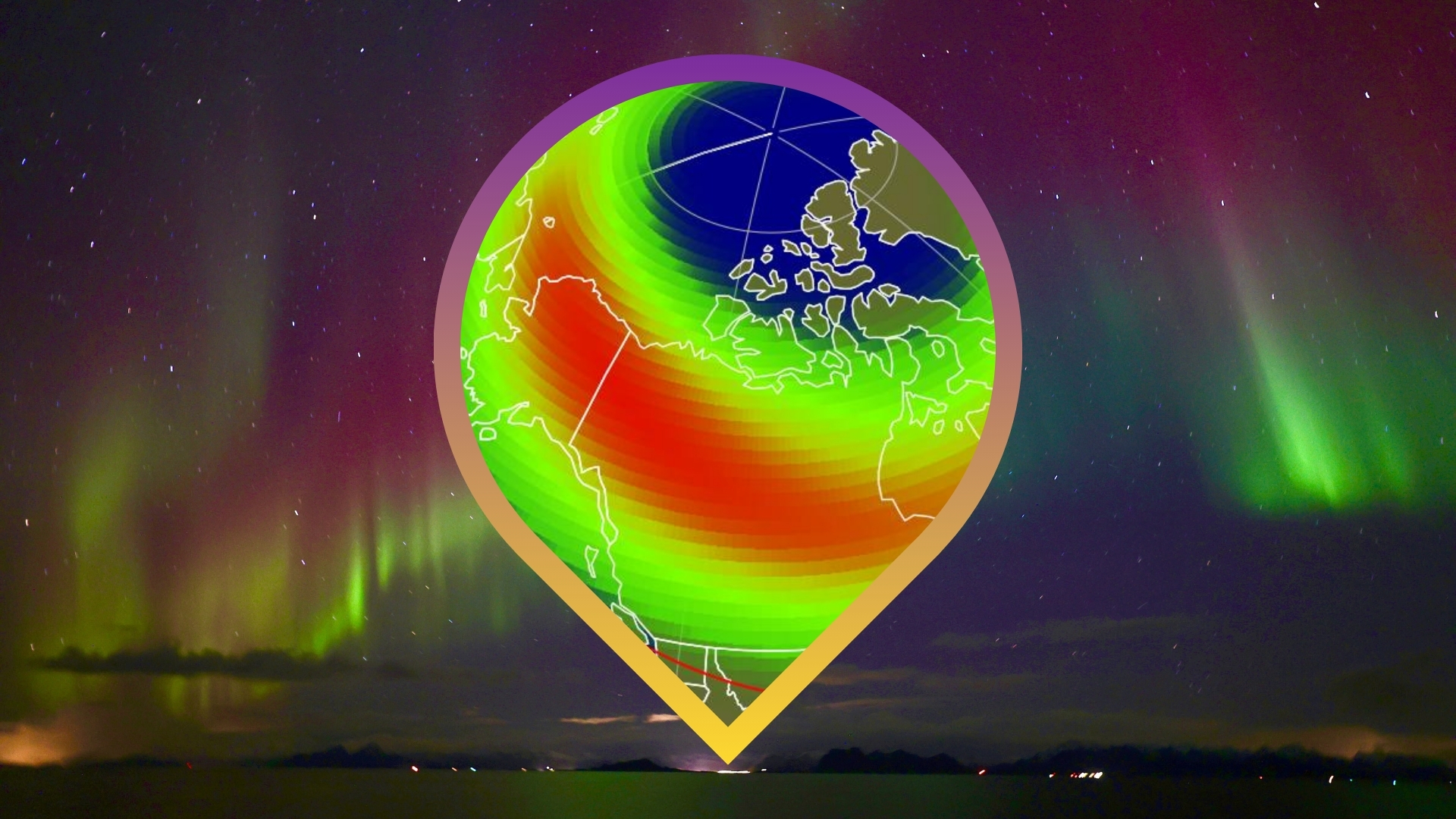Booster or Broomstick: Gemini 12 and the 'Halloween patch' That Almost Was

Fifty years ago, two astronauts proposed what might have been a Halloween treat: a mission patch depicting their flight into space — not atop a rocket, but on a broomstick.
Jim Lovell and Buzz Aldrin — later of Apollo 13 and Apollo 11 fame, respectively — were assigned to the twelfth and final flight of NASA's Gemini capsule. The 1966 Gemini 12 mission was tasked with demonstrating the techniques that were needed to send astronauts to the moon.
Lovell, as the mission's command pilot, flew a rendezvous and docking with an unmanned Agena target vehicle, just as the Apollo command and lunar modules would meet up in orbit around the moon. [Project Gemini: NASA's 2-Person Space Missions in Pictures]
Aldrin executed the world's first productive extra-vehicular activity, or spacewalk. Over the course of three excursions, he spent five and a half hours outside the Gemini capsule, proving that astronauts could accomplish meaningful tasks while in the vacuum of space.
Before that could happen though, Aldrin and Lovell needed to get into Earth orbit and by the time they were named to the Gemini 12 crew in June 1966, their launch on a Titan II rocket had already been targeted for Oct. 31. They would lift off wearing costumes (their spacesuits) but to top off the look and underscore the date, they toyed with the idea of a Halloween-themed mission patch.
Working with the artists at McDonnell Aircraft, the prime contractor for their Gemini spacecraft, Lovell and Aldrin set about creating a patch that would represent the program's final flight, while also representing the holiday. But before they could render their broomstick design, NASA pulled a "trick" and their launch slipped into November.
As the Gemini 12 mission patch ultimately took form, sans the witch conveyance, it came to feature a crescent moon as a nod to the goal of the Apollo flights that would follow.
Breaking space news, the latest updates on rocket launches, skywatching events and more!
"The numeral 'XII' appears at the top of the patch as on the face of a clock, with the Gemini spacecraft pointing to it, as the hour hand on a clock points to the hour of '12' — a reminder this was the final flight of the Gemini program," wrote Gene Dorr, a space mission patch enthusiast who in 2010 helped to replicate the original Gemini patches for A-B Emblem, NASA's contractor for embroidered emblems.
And though the four-day flight launched almost two weeks later on Nov. 11, the final Gemini 12 patch retained a nod to Halloween.
"The orange and black colors evoke Halloween, since the mission was originally scheduled to fly around that time," wrote Dorr, describing the reissued Gemini 12 patch.
After Gemini 12, other crews eventually spent Halloween in space, but it took 34 years before astronauts launched on the holiday. NASA's Bill Shepherd lifted off with Russian cosmonauts Sergei Krikalev and Yuri Gidzenko on Oct. 31, 2000 to become the first residents aboard the International Space Station.
See the Gemini 12 mission patch as worn by Jim Lovell and Buzz Aldrin at collectSPACE.
Follow collectSPACE.com on Facebook and on Twitter at @collectSPACE. Copyright 2016 collectSPACE.com. All rights reserved.

Robert Pearlman is a space historian, journalist and the founder and editor of collectSPACE.com, a daily news publication and community devoted to space history with a particular focus on how and where space exploration intersects with pop culture. Pearlman is also a contributing writer for Space.com and co-author of "Space Stations: The Art, Science, and Reality of Working in Space” published by Smithsonian Books in 2018.
In 2009, he was inducted into the U.S. Space Camp Hall of Fame in Huntsville, Alabama. In 2021, he was honored by the American Astronautical Society with the Ordway Award for Sustained Excellence in Spaceflight History. In 2023, the National Space Club Florida Committee recognized Pearlman with the Kolcum News and Communications Award for excellence in telling the space story along the Space Coast and throughout the world.


